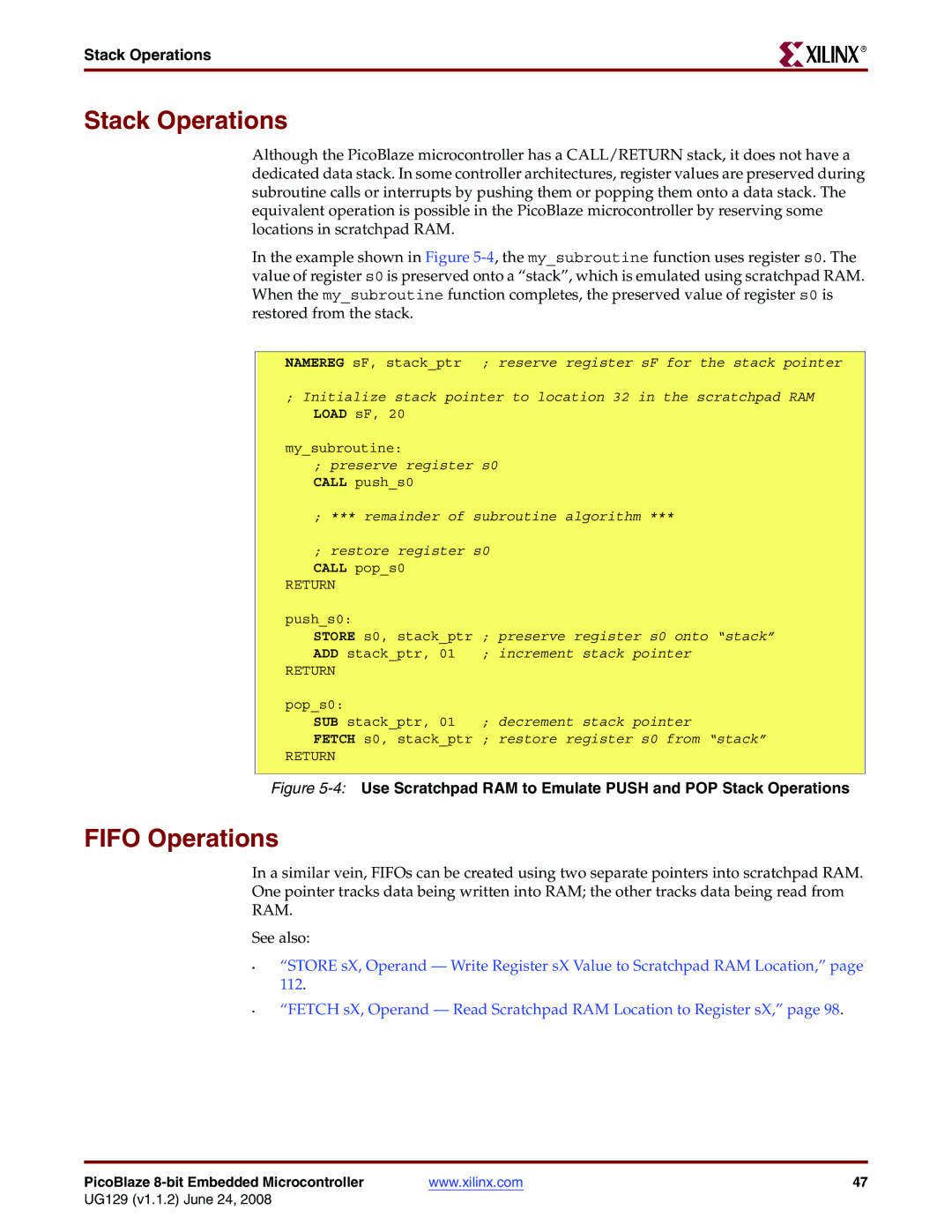
Stack Operations
R
Stack Operations
Although the PicoBlaze microcontroller has a CALL/RETURN stack, it does not have a dedicated data stack. In some controller architectures, register values are preserved during subroutine calls or interrupts by pushing them or popping them onto a data stack. The equivalent operation is possible in the PicoBlaze microcontroller by reserving some locations in scratchpad RAM.
In the example shown in Figure
NAMEREG sF, stack_ptr ; reserve register sF for the stack pointer
;Initialize stack pointer to location 32 in the scratchpad RAM LOAD sF, 20
my_subroutine:
;preserve register s0 CALL push_s0
;*** remainder of subroutine algorithm ***
;restore register s0
CALL pop_s0
RETURN
push_s0:
STORE s0, stack_ptr ; preserve register s0 onto “stack”
ADD stack_ptr, 01 ; increment stack pointer
RETURN
pop_s0:
SUB stack_ptr, 01 ; decrement stack pointer
FETCH s0, stack_ptr ; restore register s0 from “stack”
RETURN
Figure 5-4: Use Scratchpad RAM to Emulate PUSH and POP Stack Operations
FIFO Operations
In a similar vein, FIFOs can be created using two separate pointers into scratchpad RAM. One pointer tracks data being written into RAM; the other tracks data being read from RAM.
See also:
•“STORE sX, Operand — Write Register sX Value to Scratchpad RAM Location,” page 112.
•“FETCH sX, Operand — Read Scratchpad RAM Location to Register sX,” page 98.
PicoBlaze | www.xilinx.com | 47 |
UG129 (v1.1.2) June 24, 2008
